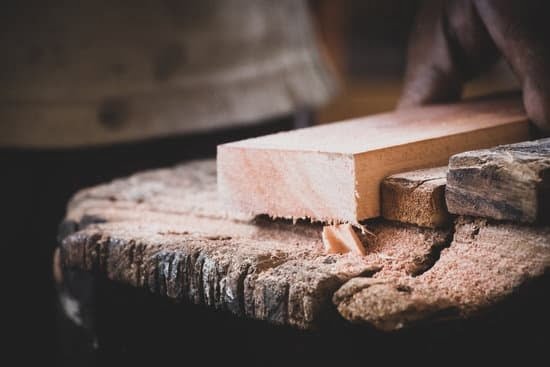Are you wondering how to fit woodworking vice into your workspace for your next woodworking project? Woodworking vices are essential tools for securely holding workpieces in place, allowing for more accurate and controlled woodworking. In this article, we will explore the importance of a woodworking vice and its role in woodworking projects. We will also provide valuable tips on selecting the right size, installing, maintaining, using, and even upgrading your woodworking vice to enhance its functionality.
Woodworking vices come in various types and sizes, each serving specific purposes and catering to different needs. Whether you’re working on small-scale or large-scale projects, having the right type of woodworking vice can make a significant difference in the quality and efficiency of your work. Understanding the different types available will help you make an informed decision when fitting a woodworking vice into your workshop.
Selecting the right size woodworking vice is crucial for ensuring that it fits your specific projects and workspace. A vice that is too small may limit what you can work on, while one that is too large may take up too much space in your workshop. We will provide practical tips on how to choose the appropriate size that meets your needs without compromising functionality or efficiency.
Types of Woodworking Vices
When it comes to woodworking, having the right tools and equipment is essential for quality results. One of the key tools that every woodworker should have in their arsenal is a woodworking vice. There are several types of woodworking vices available on the market, each with its own unique features and benefits. Understanding the different types of woodworking vices can help you choose the best one to fit your specific needs.
Bench Vise
The bench vice is perhaps the most common type of woodworking vice. It is typically mounted underneath or on top of a workbench and is used for holding wood pieces steady while they are being worked on. Bench vices come in various sizes and designs, including those with quick-release mechanisms for easy operation.
Woodworking Table Vise
A woodworking table vice is designed to be mounted directly onto a table or work surface, making it ideal for smaller woodworking projects. This type of vice offers versatility and convenience, allowing woodworkers to secure their workpieces without needing a dedicated workbench.
Moxon Vice
The Moxon vice, also known as a twin-screw vice, is a traditional style woodworking vice that features two wooden screws for clamping workpieces. This type of vice is particularly useful for holding large or long pieces of wood securely in place.
Understanding the different types of woodworking vices available will help you choose the best one for your specific projects and workspace. Consider factors such as the size of your workpieces, the available space in your workshop, and the type of projects you commonly work on when selecting a woodworking vice that fits your needs.
Selecting the Right Size
When it comes to choosing the right size woodworking vice for your specific projects and workspace, there are a few key considerations to keep in mind. The size of the woodworking vice will ultimately depend on the type of projects you typically work on and the available space in your workshop. Here are some tips on how to select the right size woodworking vice:
- Consider the size of your projects: Think about the typical sizes of the wood pieces you work with. If you often work with larger pieces, you may need a wider jaw opening on your woodworking vice to accommodate them.
- Evaluate your workspace: Take into account the available space in your workshop or garage. If you have limited space, a smaller woodworking vice may be more practical. However, if space is not an issue, you can opt for a larger model for added versatility.
- Think about portability: If you have a mobile workspace or like to move around while working on different projects, consider getting a smaller, more portable woodworking vice that can easily be clamped onto different surfaces.
Once you have assessed these factors and have a rough idea of what size woodworking vice would best suit your needs, it’s time to take precise measurements and compare them to the specifications of different vices on the market.
- Measure your workbench or table where the vice will be mounted. Take note of both the width and thickness of the surface.
- Determine the maximum jaw opening you will need based on the largest pieces of wood you typically handle. This will help narrow down your options when shopping for a woodworking vice.
- Compare different models: Look at various woodworking vices that offer different jaw widths and openings. Consider how each one aligns with your measurements and project requirements before making a final decision.
By following these tips and taking careful measurements, you can confidently choose the right size woodworking vice that perfectly fits your specific projects and workspace.
Installing the Woodworking Vice
When it comes to woodworking, having a reliable woodworking vice is essential for securing your workpieces and allowing you to work on them with precision and stability. However, it’s not just about having the right vice – knowing how to fit woodworking vice properly is equally important. Whether you’re a seasoned woodworker or just starting out, understanding the process of installing a woodworking vice is crucial for optimizing its functionality in your workshop.
To help you get started, here is a step-by-step guide on how to properly install and mount a woodworking vice to a workbench or table:
1. Prepare the Workbench: Before installing the woodworking vice, make sure that your workbench or table is sturdy and stable enough to support the vice and withstand the pressure applied during woodworking tasks.
2. Positioning the Vice: Determine where you want to mount the woodworking vice on your workbench. Consider factors such as ease of access, proximity to power sources, and adequate clearance for longer workpieces.
3. Marking and Drilling Holes: Use a measuring tape and pencil to mark the positions of the screw holes for mounting the vice onto the workbench. Once marked, use an appropriate drill bit to create pilot holes for the screws.
4. Mounting the Vice: Place the woodworking vice on the marked position and align it with the pilot holes. Securely fasten it in place using suitable screws and ensure that it is firmly attached to the workbench without any wobbling.
By following these steps, you can ensure that your woodworking vice is securely installed on your workbench or table, ready for use in various woodworking projects. Proper installation will not only enhance the functionality of your vice but also contribute to a safe and efficient woodworking environment.
Maintaining Your Woodworking Vice
Regular Cleaning and Lubrication
To ensure your woodworking vice remains in good working condition, regular cleaning and lubrication are essential. Over time, dust, debris, and wood shavings can accumulate in the moving parts of the vice, hindering its performance. Use a brush or compressed air to remove any buildup, and then apply a thin coat of lubricant to the moving parts to keep them operating smoothly.
Check for Wear and Tear
Another important aspect of maintaining your woodworking vice is to regularly check for any signs of wear and tear. Inspect the jaws, screws, and other components for any damage or excessive wear that may affect the vice’s performance. Replace any worn-out parts as needed to prevent further issues.
Proper Storage
When not in use, it’s important to store your woodworking vice properly to prevent damage. Make sure the vice is clean and dry before storing it, and consider covering it with a protective cloth or tarp to shield it from dust and moisture. Additionally, if you live in an area with high humidity, consider using a dehumidifier in your workshop to prevent rust on the metal parts of the vice.
By following these maintenance tips, you can ensure that your woodworking vice remains in optimal working condition for years to come. Regular cleaning, lubrication, inspections for wear and tear, and proper storage will help prevent common issues and prolong the life of your valuable woodworking tool.
Using Your Woodworking Vice
Woodworking vices are essential tools for anyone involved in woodworking projects, as they provide a secure grip on the workpiece, allowing for precision and stability during various tasks. Once you have successfully fitted your woodworking vice onto your workbench or table, it’s important to understand how to make the most of this tool for different woodworking tasks.
One practical use of a woodworking vice is holding pieces of wood securely in place while sawing, chiseling, planing, or sanding. The vice’s strong grip ensures that the workpiece remains steady and stable, minimizing the risk of accidents and errors. Whether you’re cutting wood to size or shaping it into a specific form, a properly fitted and well-maintained woodworking vice can greatly enhance your productivity and the quality of your craft.
In addition to securing workpieces during cutting and shaping processes, a woodworking vice can also be used for assembling and gluing wood components. By clamping pieces together in the vice, you can ensure that they are aligned correctly and firmly bonded with glue.
This is particularly useful for joinery tasks such as creating furniture, cabinets, or other wooden structures where precise alignment is crucial. Properly using your woodworking vice for assembly and gluing will result in stronger and more professionally crafted woodwork.
Upgrading Your Woodworking Vice
When looking to upgrade your woodworking vice, there are a variety of potential upgrades and accessories that can enhance the functionality and versatility of your tool. One popular upgrade is adding removable jaw pads to your woodworking vice.
These pads provide a softer grip on delicate materials, such as wood with a finished surface, preventing damage while still providing a strong hold. Additionally, adding pipe clamps to the jaws of your woodworking vice can increase its capacity to hold larger and irregularly shaped workpieces.
Another useful accessory for enhancing the functionality of your woodworking vice is an adjustable bench dog. This accessory can be easily installed into the dog holes of your workbench, allowing you to secure long or irregularly shaped workpieces for more stable and precise cutting, planing, or sanding. Furthermore, installing a quick-release mechanism on your woodworking vice can significantly reduce the time and effort required to open and close the jaws, improving overall efficiency in your woodworking projects.
In terms of versatility, consider adding swivel bases to your woodworking vice. This upgrade allows you to easily rotate your vice and lock it at different angles, providing greater access to all sides of your workpiece without having to reposition it manually. Other potential upgrades include installing protective covers for the screw and guide rods of your vice to prevent dust and debris from affecting its performance over time.
| Potential Upgrades | Enhanced Functionality |
|---|---|
| Removable Jaw Pads | Softer grip on delicate materials |
| Pipe Clamps | Increased capacity for larger workpieces |
| Adjustable Bench Dog | Securing long or irregularly shaped workpieces |
Conclusion
In conclusion, fitting a woodworking vice is an essential step in setting up a functional and efficient woodworking space. Understanding the importance of a woodworking vice and its role in woodworking projects is crucial for any woodworker.
Selecting the right size and type of woodworking vice that fits your specific needs and workspace is important for ensuring it meets the demands of your projects. Whether you are a hobbyist or a professional woodworker, having a reliable woodworking vice can significantly enhance the quality and precision of your work.
Installing a woodworking vice may seem daunting at first, but with the right guidance, it can be accomplished smoothly. Following a step-by-step guide on how to properly install and mount a woodworking vice to a workbench or table is essential for achieving stability and durability. Additionally, maintaining your woodworking vice is equally important for keeping it in good working condition and preventing common issues that may arise from regular use.
Frequently Asked Questions
How Do You Attach a Woodworking Vice?
To attach a woodworking vice, you first need to determine its position on the workbench. Once decided, mark the holes for the screws and drill them into the workbench. Then, secure the vice in place using the screws provided.
How Should a Vice Be Mounted?
A vice should be mounted securely to a sturdy workbench surface to ensure stability during use. It’s important to position it at a comfortable working height, allowing for proper leverage and support while woodworking.
What Size Woodworking Vise Do I Need?
The size of woodworking vise you need depends on the type of projects you typically work on. For smaller projects, a 7-inch vise may suffice, while larger-scale projects may require a 10-inch or larger vise for securing various sizes of wood pieces effectively.

Hi everyone! I’m a woodworker and blogger, and this is my woodworking blog. In my blog, I share tips and tricks for woodworkers of all skill levels, as well as project ideas that you can try yourself.





